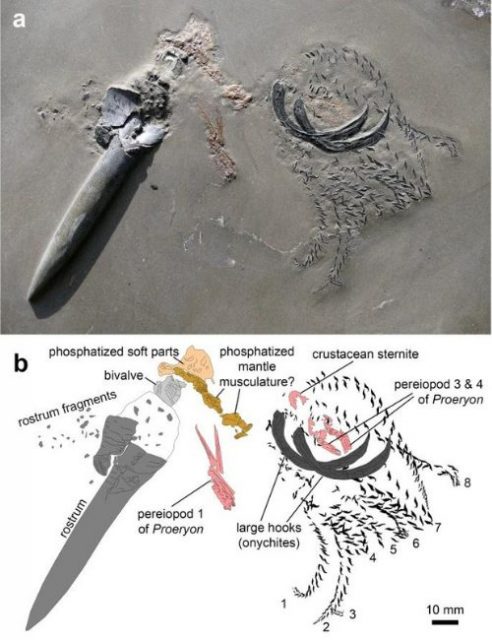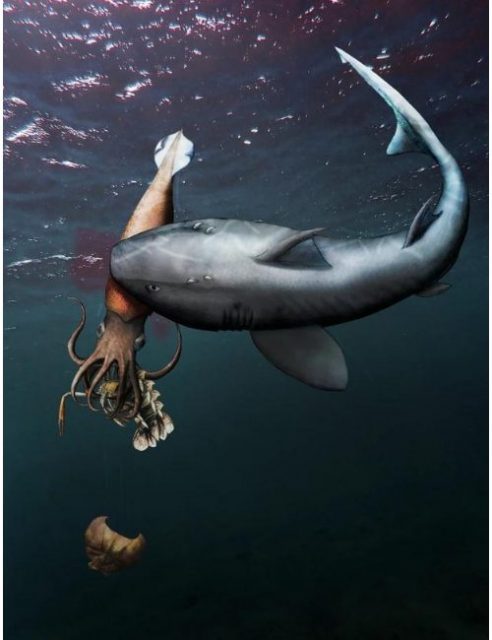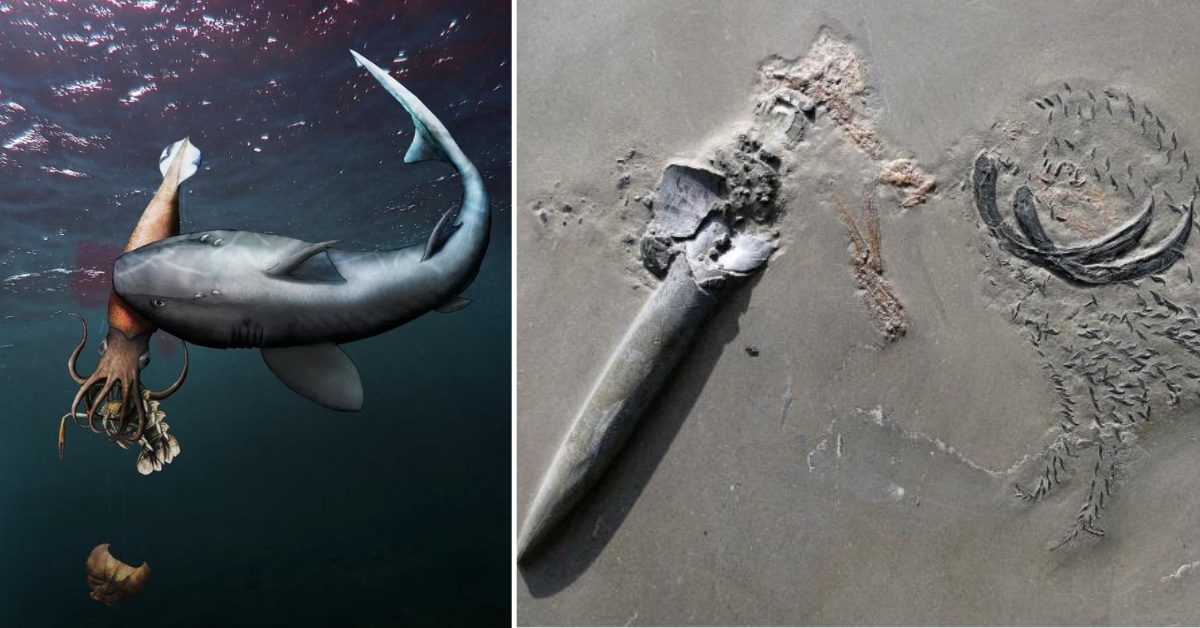It’s a scene worthy of Jurassic Park. An ancient crustacean found itself at the mercy of a multi-limbed predator. Which in turn was attacked by a toothy terror! The fossil-eating fossil was found in Germany by Christian Klug et al. and reported in the Swiss Journal of Palaeontology.
What we know about the fossil-eating fossil
The trio engaged in this tasty tussle 180 million years ago — the early Jurassic period. How do we know? Because two of the prehistoric participants are immortalized as fossils. And now a study has been released, with some indigestion-inducing findings.

Published in the Swiss Journal of Palaeontology, the analysis also makes history through the use of a new word: “pabulite.”
What does that mean? As reported by Live Science, “pabulite” combines the Latin “pabulum” (food) and Greek “lithos” (stone). The study describes it in terms of “incomplete predation,” i.e., fossilized prey that didn’t wind up in the stomach of a peckish predator.
Pabulites “have a great potential to inform about predation as well as anatomical detail, which is invisible otherwise” the team state.
IFL Science writes they are “something of a golden egg for paleontologists.” Christian Klug, lead study researcher and curator at the University of Zurich’s Palaeontological Museum, spoke to Live Science. He refers to the fossil as a true one-off.
On the flip side, there are “regurgitalites,” which are unfortunate future fossils that did enter the digestive tract…and then exited.
The extraordinary relic was first discovered in 1970 by enthusiast Dieter Weber. He was quarry-bound in the vicinity of Stuttgart, in southwest Germany when he spotted the fossil-eating fossil.
It was acquired in recent years by the State Museum of Natural History Stuttgart. Günter Schweigert, who works with Jurassic and Cretaceous invertebrates, is a curator there. He’s responsible for bringing the fossil to the museum. Schweigert collaborated with Klug on the study.
How did we get this rare find?
Enough of personnel, what about those delicious details? The sequence of events seems clear enough. Once the chief predator ate the juicy parts of the 10-armed “belemnite” — a creature related to modern squid — it dumped the rest.
The belemnite, plus the crustacean it was busy consuming, wound up at the bottom of the ocean where they became unlikely fossil buddies. Or leftovers, as the case may be.
As for the players in this fishy and foodie tale, details are ambiguous. Klug and colleagues believe a Jurassic shark came in for the final act. Possibly the Hybodus hauffianus, or “humped tooth” shark. Live Science mentions evidence of belemnites being on its menu, care of a separate fossilized specimen.
Though that example may have bitten off more than it could chew. Klug comments: “It ate about 200 of them but forgot to bite off the rostra, thereby clogging its stomach, which eventually killed it.” The rostrum is a beak, part of a hard internal structure that differentiates belemnites from modern squid.

Analysis of the fossil reveals it to be of the species Passaloteuthis laevigata. With a reportedly bullet-shaped rostrum measuring approximately 4 inches, this belemnite was a nutritious yet deadly dish.
Its 10 limbs, at around 3 inches each, featured gripping hooks in double rows. Klug notes to Live Science that two of the arms bore larger hooks. The belemnite also has two fins. Approximately 10 examples of well-preserved belemnite fossils are in existence
Forming the last and smallest piece of the puzzle is the crustacean, thought to be a “molt.” In other words, not the full animal, but its skin or its discarded exoskeleton. Identified as the genus Proeryon, the complete creature would have resembled a lobster.
More from us: Before Coins, People Used Scrap Metal As Currency
The positioning of the skin in the belemnite’s arms suggests to Klug the deep sea diner was tucking in when the shark approached — presumably enjoying its meal so much it lost track of the surrounding water.
He’s keen to stress that many of the ideas being put forward are speculative. Without the benefit of being there, this is the best possible reading of the situation.
Pabulites are curious leftovers from prehistoric life. And this one shows a savage moment from the natural world, captured in all its guzzling glory.
